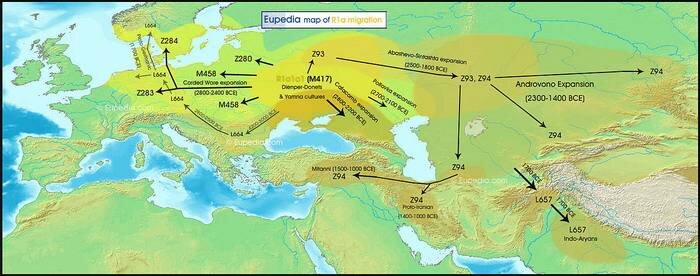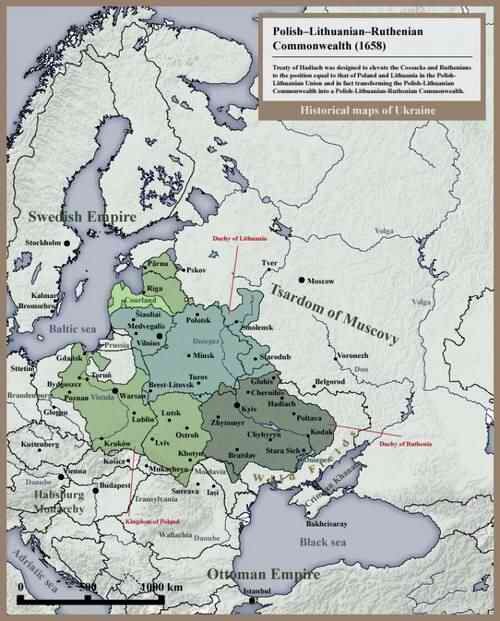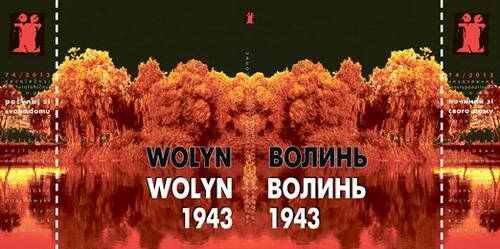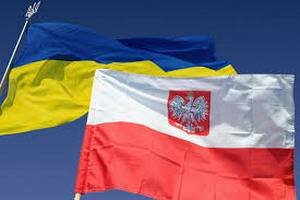
The Independent Analytical Center for Geopolitical Studies “Borysfen Intel” affords ground to the analysts generation for expressing their point of view regarding the political, economic, security, information situation in Ukraine and in the world in general, according to their personal geopolitical studies and analyses.
Note that an authors’ point of view
|
Valeriy Shvets
Doctor of Physical and Mathematical Sciences, Professor
Academician of the Academy of Sciences of Higher Education of Ukraine
In the early 1980s, I bought three volumes of the works by the prominent religious and scientific figure of Ukraine-Rus Feofan Prokopovych. These works were published by the Ukrainian SSR Academy of Sciences in the modern Ukrainian language in translation from Latin.
Before getting into Peter I's inner circle and becoming the main theorist of his reforms aimed at strengthening the then Moscovia (in those times his was a typical fate of talented Ukrainians-Rusyns, devoid of any national identity signs), Feofan Prokopovich had been the rector of the Kiev-Mohyla Academy, where he had been teaching. The three-volume included his lectures on rhetoric, mathematics, history, logic, ethics, natural philosophy or physics. One feature of this edition extremely surprised me — namely, about Roxolana juventute, that is, his works were an appeal to Roksolana young people. The Ukrainian translation had it as a Ukrainian youth. Why Roksolana youth? After all the Roksolana were, as it is now considered, one of the Iranian-speaking (Persian-speaking) Sarmatian tribes inhabiting Ukraine at the beginning of the Common Era.
I found the answer dozens of years later, while reading Polish historians. It turned out that the Sarmatian myth was the fundamental ideological myth of Rzeczpospolita (word-for-word translation of the Latin “res publica”, Polish name for the Polish–Lithuanian Commonwealth) which included, apart from Poland and Lithuania — its founders, also Ukraine and Prussia. According to the Sarmatian ethnogenetic legend, the Rus, Polish, and even Prussian nobility descended from militant Sarmatians, in modern terminology — Aryans who controlled the Black Sea steppes in the 3d century BC — the 4th century AD. In particular, the noble (gentry) democracy, unique in Europe at that time, was interpreted by the Sarmatian ideology as a heritage of “free Sarmatians”. The ideal of a “true Sarmatian” was a warrior — a defender of the motherland and “Golden Liberties”. Sarmatia, i.e. Rzeczpospolita, was presented as the leading edge of the European Christendom (Andrzej Sulima-Kaminski: “The History of Rzeczpospolita as the History of Many Peoples, 1505-1795”).
Therefore the Sarmatian myth was popular in Ukraine-Rus even in those times when it was subject to Moscovia. But was it just a myth? In relation to Ukrainians-Rusyns — definitely not! Not only the Ukrainian gentry, but the peasantry as well had powerful Sarmatian roots. The names of all major rivers of Ukraine-Rus are of Scythian origin (Scythians — Sarmatians' predecessors): the Dunay (Danube), Dniester, Bog (now the Southern Bug), Siverskyi Donets, Don. The Black Sea in the Iranian tradition is the North Sea. There is also the Red Sea or the South Sea. Many other toponyms and hydronyms, now considered Iranian ones, are scattered on the territory of Ukraine-Rus. For example, to this day there is a large village Roksolany near Odesa. What was the name of the Ukrainian girl who became the wife of Sultan Suleiman and was an influential person in the Ottoman Empire? That's right — Roksolana (1502-1558). It is also believed that the modern Ukrainian language has a large number of borrowings from the Iranian language, for example: борщ (borshch), лелека (leleka), люлька (lyulka), майдан (maydan), пан (pan), Сула (Sula), терези (terezy), хабар (khabar), хворий (khvoryi), хмиз (khmyz), Хорол (Khorol), чобіт (chobit), шаровари (sharovary), балакати (balakaty), мова (mova), бог (Boh), хвала (khvala), рай (ray), муж (muzh), синій (syniy), гадати (hadaty), каятися (kayatysya), заради (zarady), темрява (temryava), хата (khata), сто (sto), ящір (yashchir), волос (volos), почвара (pochvara), потвора (potvora), збіжжя (zbizhzhya), кат (kat), дбати (dbaty), тривати (tryvaty), бачити (bachyty), ошатний (oshatnyi), бо (bo), жвавий (zhvavyi) and so on.
I would interpret this fact as an exactly opposite. It is hard to imagine that the settled ancient Ukrainian population borrowed from nomadic Iranian tribes the word “hata” or the word “borshch”. Most likely, for a long period both, the nomadic and the settled population of pra-Ukraine were one people. At this, its nomadic component later spread the culture and language of its country on a wide territory of Eurasia, including the territory of modern Iran. (See — Ihor Kahanets, “Aryan Standard” and Ihor Kahanets, “Centre and Periphery”.
 The British researchers Robert McCrum, William Cran and Robert MacNeil's map in their book “The Story of English”,
The British researchers Robert McCrum, William Cran and Robert MacNeil's map in their book “The Story of English”,
shows schematically the spread of Indo-European languages from Central Dnieper area
A unique feature of the Ukrainian language is its being the closest (out of all European languages) to the sacred most ancient language of Indo-European (Aryan) Sanskrit tribes. In Sanskrit we have a lot of words of the same sound and meaning as in the modern Ukrainian language, namely біда (bida), манна (mana), доля (dolya), їван (ivan), василь (vasyl), тарас (taras), пан (pan), панна (panna), дяка (dyaka), мука (muka), шістка (shistka), двічі (dvichi), борис (borys), дума (duma), ліки (liky), матка (matka), тата (tata), матар (matar), діді (didi), дарма (darma), догана (dohana), нарада (narada), шваґер (shvager), зупа (zupa), каліка (kalika), шуба (shuba), ломота (lomota), цар (tsar), год (hod), родити (rodyty), казати (kazaty), каві (kavi), мудра (mudra), любити (lyubyty), калина (kalyna), кутя (kutya), пошана (poshana), гомін (homin), бодай (boday), лаяти (layaty), брама (brama), буза (buza), коза (koza), уста (usta), ріка (rika), гопак (hopak), пан (pan), бoрoда (boroda), барана (barana), рута (ruta), руда (ruda), рух (rukh), ріпа (ripa), ріка (rika), гопакі (hopaki), бандура (bandura), etc.
Interestingly, Professor Richard Wilson in the article “The English Language” in the Encyclopedia Britannica writes: “English and most Indo-European proto-languages seem to come from a proto-language which was already spoken some 5000 years ago in what is now Ukraine”. (See — Vasyl Kobylyuh, “The Proto-Ukrainian language and Sanskrit”, and Lev Sylenko “Maha Vira”). At this, the question about the ancestral home of the Aryan peoples is still unanswered, although nowadays dominates the point of view that it was precisely the territory of today's Ukraine-Rus'. That is, in the “ethnic pot” in the territory of modern Ukraine used to “brew” something much greater than just the tribes of Cimmerians, Scythians or Sarmatians.
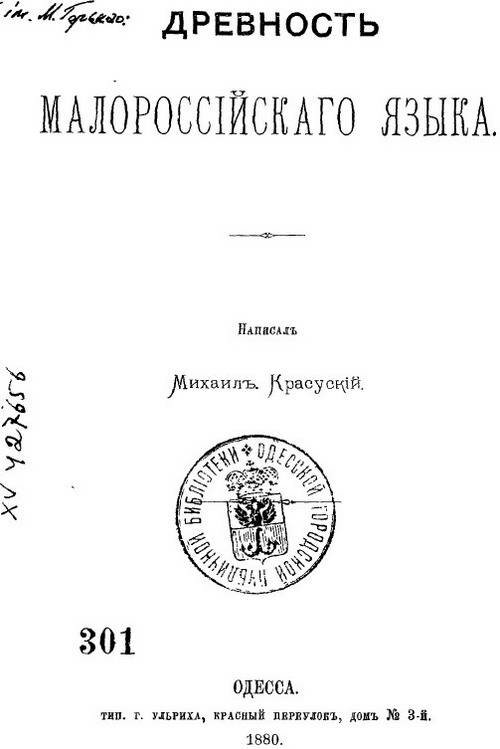 If we return to the Poles, we have shared with them not only our elite, gentry, but also, in fact, the language. The first to pay attention to this circumstance was an outstanding Polish researcher Michael Krasusky (by the way, inhabitant of Odesa) who in 1880 published his book: “The Antiquity of the Ukrainian Language”. By studying Sanskrit, he acknowledged that the Ukrainian language is the most ancient of all Indo-European languages. Now, after more than a hundred years after the publication of this book, we may state that the classical Sanskrit — is really a monument to the ancient proto-Ukrainian language.
If we return to the Poles, we have shared with them not only our elite, gentry, but also, in fact, the language. The first to pay attention to this circumstance was an outstanding Polish researcher Michael Krasusky (by the way, inhabitant of Odesa) who in 1880 published his book: “The Antiquity of the Ukrainian Language”. By studying Sanskrit, he acknowledged that the Ukrainian language is the most ancient of all Indo-European languages. Now, after more than a hundred years after the publication of this book, we may state that the classical Sanskrit — is really a monument to the ancient proto-Ukrainian language.
Most of the words of the Ukrainian language are not common with the Persian (“Iranian”) language. Right, but they are pronounced with an Iranian accent, that is with the voiceless “h”. This accent is not unique to the Persians, but also to the Rusyns-Ukrainians, Belarusians and Czechs. Well, enough about the words.
At some point in history Ukrainians-Rusyns were no longer referred to as Roxolanas. The names “Slavs” or “Slavic people” emerged and became widely spread. In my opinion, this change was due to Moscovia's evolution. Having exhausted the full potential of the brand “Rus”, having included all the lands of former Rus into its empire and having changed its name from Moscovia to Russia, it moved to the next stage. Now it could add most of the peoples of Central Europe and the Balkans to the empire using the brand “Slavs”. It should be noted that neither Slavic nor Germanic genes have not been identified by science. Today, we can speak about Slavic community only in the linguistic sense.
It should be pointed out that certain people's belonging to the group of peoples with linguistic affinity does not mean its ethnic kinship with them. The language of the people can change within one or two generations. A simple example: “the backbone of the Ukrainian nation” in just seventy years of Soviet (Russian) power was broken to such extent that the Ukrainian people, which had been communicating mainly in the Ukrainian language (up to 90 % before the First World War), began to use mainly Russian (70 % in Central, Southern and Eastern Ukraine today). The linguistic kinship of people within a state does not necessarily mean their ethnic kinship. An example is the United States of America.
That is, Muscovites are Slavs by language, like Ukrainians-Rusyns and Poles, but in ethno-genetic terms they have very little in common with them.
It is likely that if the boundaries of the Roman Empire had not crossed the Danube, nowadays' Moldovans would spoke Ukrainian. And if the borders had reached the Dnieper, the entire right-bank Ukraine would talk some Latin dialect. Many different peoples as a result of having been part of the Roman Empire for a long time, now speak similar languages.
As for Moscovia's language, it is artificial and was created on the basis of the Church-Slavonic language. In fact, it was an artificial method to bring to a common denominator the Ugro-Finno-Tatar ethnic basis of that population.
Hence, although the language, as well as faith, is very important in identifying the nationality and the nation, yet the main fundamental principle of coexistence of both, individuals and separate peoples, I think, is the issue of blood. My point of view is as follows: the current war in the East of Ukraine — is, first of all, an ethnic war, and, therefore, it is the issue of blood.
And what about the ethnic kinship of Ukrainians-Rusyns and Poles?
These peoples belong to round-headed (brachycephalic) ethnic groups as do all the peoples of Central Europe, Romanians included.
As for the Muscovites, on their native lands they belong to the long-headed (dolichocephalic) ethnic group.
The Poles have the highest concentration of haplogroup R1a, as well as R1a1 (a certain mutation of Y-chromosome of men), which is associated with Aryan tribes (Scythians, Sarmatians) — 56 %. With Ukrainians this figure is somewhat lower — 54 %, but also extremely high, much higher than with Germans. The matter is that the Poles have not experienced genocide. Carriers of other haplogroups, that is, Muscovites, have not been brought a mass to their country to replace the killed people. However, Ukrainians-Rusyns' concentration of Haplogroup I2 is much higher than that of Poles — 22-25 % against 16-18 %, which is associated with Tripillyan tribes. Their culture reached its peak exactly in the territory of Ukraine-Rus' (mainly on the right bank of the Dnieper River). This haplogroup is characteristic also for Germans and is almost absent in the areas further to the west in Europe.
Poles and Germans both have significant concentrations of Haplogroup R1b, which is associated with Celtic tribes. Ukrainians-Rusyns do have this haplogroup, but the concentration of it, as well as of other haplogroups, is smaller. If we take into consideration the fact that the haplogroups R1a and R1b are subgroups of haplogroup R1 and do not make a big difference between them, Ukrainians, Poles and Germans, and not only they are “cut from the same cloth”. But Ukrainians-Rusyns and Poles are also united by related languages and common belonging for centuries to one state — Rzeczpospolita.
Moscovia is characterized by a great diversity of genetic parameters on its territory. Muscovites of some regions show kinship not with each other but with neighboring ethnic groups. Thus, the percentage of haplogroup I2 on the border with Ukraine is 21 %. In the north of the European territory — 5 %. And so on. I think that if immigrants from Ukraine and Belarus were removed from Russia, then most likely, none of the above-mentioned haplogroups would remain there.
A similar analysis can be carried out with respect to the blood groups. Poles, like Ukrainians-Rusyns, mainly have the second (II) blood group — 39 % and 40 %, respectively. 18 % of Ukrainians and 20 % of Poles have the third (III) blood group. That is, genetically Poles and Ukrainians-Rusyns are united by all the basic (in the light of modern science!) genetic and linguistic characteristics. Within experimental error, they could well be considered one people. Or, to put it more accurately, the genetic difference in the sense of the average indexes between the Donbas, where in some places Muscovites make up to 50 %, and Galicia, where there are almost no Muscovites, is significantly greater than the difference between the inhabitants of the center of Ukraine and central Poland. So, the Sarmatian myth (in the light of modern science!) has been confirmed for the Poles too.
But let us return to the past.
 Small and middle gentries of Poland, Ukraine, Russia, Lithuania, Prussia and Belarus — an analogue of the current middle class — were fully aware of their common ethnic and spiritual unity. This helped internal consolidation of Rzeczpospolita as the first democratic (regarding the gentry) state of the world. In all societies and at all times the carrier of the national idea was the middle class or its equivalent. Unfortunately, the nobility was a small percentage of the population of Rzeczpospolita. It could only control the situation in a peaceful or not very excited society. But there had always been the disturbance threshold, above which the control over the society was lost. The state of the society beyond this threshold is called RUINA (ruins).
Small and middle gentries of Poland, Ukraine, Russia, Lithuania, Prussia and Belarus — an analogue of the current middle class — were fully aware of their common ethnic and spiritual unity. This helped internal consolidation of Rzeczpospolita as the first democratic (regarding the gentry) state of the world. In all societies and at all times the carrier of the national idea was the middle class or its equivalent. Unfortunately, the nobility was a small percentage of the population of Rzeczpospolita. It could only control the situation in a peaceful or not very excited society. But there had always been the disturbance threshold, above which the control over the society was lost. The state of the society beyond this threshold is called RUINA (ruins).
What about Bohdan Khmelnytskyi? First his activity was just a revenge for a personal insult. Then, to strengthen his positions, he became the spokesman for senior Cossacks' interests, later — for all the Cossacks, even later — for all Rusyns, that is, current Ukrainians. At this, he always emphasized his loyalty to the Polish King and the highest interests of Rzeczpospolita. When he had used all the internal trumps in the game that did not stop, but was gaining momentum, he asked the Tsar of Moscovia for help. Hetman quickly realized the fatality of such a union, but his sudden death did not leave him a chance to correct the error. Here's how Taras Shevchenko spoke about Bogdan Khmelnytskyi, “Ой Богдане — Богданочку! Як би була знала, у колисці б задушила, під серцем приспала”. (“Oh Bogdan, Bohdanchyk! Had I known, I would have strangled you in the cradle, would have put you to sleep before you were born”).
In this sense, the Cossack officers behaved wiser. Thus, the outstanding Cossack Colonel Ivan Bohun when Bohdan Khmelnytskyi was alive, in his speech to the Cossacks said: “There are the worst slavery and the highest degree bondage in Moscovia. All they have is either God's or Tsar's, they don't and can't have anything of their own. And people, in their opinion, have been created ostensibly to have nothing and to be slaves. ...As for the people, they are all considered to be serfs, allegedly coming not from the same people, but purchased from the captives and slaves; and those serfs, or as they call them “peasants” of both sexes, that is, men and women with their children, are sold (under unknown in the world rights and assignments) at markets and in houses by the owners and masters on a par with the cattle, and often are exchanged for dogs. In a word, to get united with that people is the same as to jump from the frying pan into the fire”.
A year after Bohdan Khmelnytskyi's death, his successor Hetman Ivan Vyhovskyi offered the Poles a so-called “Hadyach Treaty” approved by the Cossacks Council in 1658. According to it, the area, controlled by Zaporizhzhya and known as Duchy of Rus, was declared the third component of with extensive rights of autonomy, along with the Polish Crown and the Grand Duchy of Lithuania. In a shortened form, the Treaty was ratified by the Sejm of Rzeczpospolita, but was not implemented due to the situation in Ukraine. The safe threshold of perturbation of the society in Ukraine-Rus had been crossed. The Cossack Starshyna (senior officers) had lost control of the situation in the society. The war of all against all began. The consequences of war were predictable — RUINA (Ruins). Based on its results, even heavily emasculated, the “Hadyach Treaty” remained an unreachable dream for the Ukrainian people. The exhausted country fell to the feet of the Moscow tyrant.
I think, the war led by Bohdan Khmelnytsky cannot be called national. The national idea, as such, had ripened in the Ukrainian society only in Taras Shevchenko's times. Even in Cyril and Methodius Society's Program, where it first appeared as a certain theoretical concept, in the first place traditionally remained a complex of social ideas. There was no such thing as national idea during Khmelnychchyna (the Khmelnytskyi uprising). The fact that the rebels' main enemies immediately became Ukrainian magnates, in particular, Yarema Vyshnevetskyi (Ukrainians' traditional disrespect for their aristocracy), indicates that it was a social rather than a national explosion. Note that Yarema Vyshnevetskyi's noble origin allowed him to claim even to the royal crown. Here is a brief information about him from Wikipedia: “The prince of the Lithuanian-Rus clan of the Vyshnevetskyis, a descendant of Rurik I and Gediminas, a relative of the Moldovan Hospodars (Princes), Byzantine emperors, Genghises, and the Ostrozskyis Hlynskyis princes, Moscow tsars, first Cherkasy wardens, first Atamans of Zaporizhzhya. One of the richest magnates of Rzechpospolita at the time. Rus' Voivode (warchief) (1646). Of Rzeczpospolita's King Mihai I Koribut Vyshnevetskyi's father. He used two languages — Polish and Ukrainian.” In the light of his extraordinary ambitions, Duchy of Rus had good prospects.
 The Khmelnytskyi uprising was not a war of liberation either, as the freedom-loving Ukrainian peasants “...under the caring hand of the Orthodox tsar” joined the Moscovia serfdom.
The Khmelnytskyi uprising was not a war of liberation either, as the freedom-loving Ukrainian peasants “...under the caring hand of the Orthodox tsar” joined the Moscovia serfdom.
Besides, Muscovites left all the estates they had owned previously to Polish landlords. And the untouched lands were given to new Moscow masters. And yet the peasant uprisings in Ukraine-Rus stopped. My conclusion: they were not so much due to our peasants' love for freedom, as to the weakness of the Polish authorities. Moscow tyrannical authorities did not leave a smallest chance for success, so the uprisings ended.
Perhaps it was a war for the Orthodox faith? Symbolically, after a series of military victories, Bohdan Khmelnytskyi entered Kyiv on 2 January, 1649 through the Golden Gate, sitting in a sleigh between Kyiv Metropolitan Sylvester Kosovyi and Jerusalem's Patriarch Paisiy. Anyway, the Orthodox Church was definitely interested in this. But here's my question. Can an illiterate man who does not understand the basic principles of his own faith, lay down his life for the slight differences existing between the Catholic and Orthodox faiths? Can you, my educated reader, see where those differences are? Are they worth your life?
In order to better understand the Khmelnytskyi uprising, it is advisable to refer to the later Ukrainian experience.
The most popular mass explosion of 1918-1920 in Ukraine-Rus was Makhnovshchyna (Makhno's movement). Although the rebels were almost 100 % Ukrainians, they had never sounded a single national slogan. Moreover, they made impossible Denikin's march on Moscow, and saved the Bolsheviks from total defeat that was looming. They stormed Perekop and helped the Bolsheviks victoriously end the war for power. They constantly struggled against any nation–oriented Kyiv authorities.
What about the Ukrainian Social-Democrats? Did they not in all possible ways harm Hetman Ukraine instead of helping develop it? Did they not set up the Ukrainian people to revolt against the Hetman, instead of supporting him during the Germans' withdrawal from Ukraine, when Ukraine could be rescued only by consolidation of all existing national forces? Moscow's money and irresponsibility of the Social Democrats (and even more — the Ukrainians' rooted disrespect for their aristocracy) made that revolt successful. Therefore, as is always the case with big talkers and dreamers, they, having seized power, showed their utter helplessness and, in fact, lost control of the situation.
What next? Then a few years of dedicated unequal struggle of the best sons of the Ukrainian people for independence of their country against the background of increasing anarchy in the country. But they were too few for the idea of independence to win. Most of those who took up arms, were similar to the Makhnovists, that is, they were fighting not for difficult to understand Ukraine, but against something, for example — the Bolshevik policy of war communism. The logical consequence of this struggle was RUINA (Ruins).
What was after RUINA (Ruins)? The exhausted country fell to the feet of the Moscow Bolshevik despots. The peasants' revolt for lords' land (about 20 %) ten years later ended in complete confiscation of peasants' land, together with those illegally captured 20 %. Cardsharps, before stripping the customer to the buff, always allow him first to win a little. Having won the fight against War Communism and having received NEP from the Bolsheviks, Makhno and the like lost the war. In 1932-1933 millions of Ukrainians were killed by famine and repressions. Those who fought for freedom of Ukraine, lost then, but thanks to them Ukraine is now an independent state.
But let's return to the main topic of our study of ethnic and spiritual kinship of Ukrainians-Rusyns and Poles.
To kill a Pole is the same as to kill a Ukrainian. To kill a Ukrainian is the same as to kill a Pole.
To despise a Pole is the same as to despise a Ukrainian. To despise a Ukrainian is the same as to despise a Pole.
If Ukrainians-Rusyns and Poles began to look at the world from this point of view, these peoples' true friendship could create a new world cultural and economic force in the center of Europe. The basis of this force could be the slogan: “Two states — one people”, but in no case the slogan: “Two peoples — one state”.
However, the Polish Sejm's latest decision on the Volyn tragedy shows that there is no elite oriented to such high ideas in the Polish society. Moreover, it seems that over the past 300 years not only the Polish elite, but the whole Polish society has not abandoned the perception of a Ukrainian as a “damned peasant-cad”. Striking is not even the fact that the Polish Sejm adopted that resolution, but the fact that there was not a single vote against it. Moreover, njot a single respected and authoritative person in Poland has publicly argued against it. The disease called “damned peasant-cad” seems to have gone too far.
How should we estimate this resolution regardless of its content? What is the fallacy of the Poles' position?
Firstly, the Poles believe Ukraine is weak and unable to adequately respond to the blatant provocation due to its extremely complicated situation. Weaker than ever, because the Sejm could have adopted this resolution five or ten years ago, or in five or ten years.
Secondly, the Poles have partially outlined the area of their claims, even though there are no direct negotiations on this matter. It appears that the Polish side expects further dangerous aggravation of the Russian-Ukrainian war, with Ukraine's possible defeat. This resolution may be a certain signal to the aggressor. Dividing its neighbors’ territories is not too unusual for Poland. In the seventeenth century it already divided Ukraine with Moscovia. In the eighteenth century Moscovia thrice divided Poland with Prussia and Austria. In 1921, Poland also divided the territory of Ukraine with Moscovia. In 1938 Czechoslovakia was divided by Poland and Germany. In 1939, Germany and Moscovia divided the territory of Poland. In 1945, Poland once again divided the territory of Germany and Ukraine with Moscovia. However, the Poles should not forget that every time they participate in division of a neighbor's territory, their own territory is divided later.
Thirdly, the Poles are not taking into consideration the fact that in 1943 in Volyn there were not two characters — Poles and Ukrainians, but at least four. The most important actor, as always in such cases, was Moscow's security services. Have the Poles ever tried to investigate their role in this tragedy (or at least in the recent Smolensk one)? Germany was also an important party in Volyn because all the tragic events in Volyn took place in the territory already occupied by Germany.
At this, it should be noted that the Reich Commissar of Ukraine was Erich Koch, recruited by the Soviet (Russian) special services long before the outbreak of the Second World War. Interestingly, after the war in the Polish court (why Polish?) E. Koch spoke about his sympathies for the Soviet Union, saw as his merit his counteracting Alfred Rosenberg's plans to create a Ukrainian state in the occupied territory. By the way, A. Rosenberg — former Reichsminister for the Occupied Territories — was sentenced by the court to death, although there were no specific reasons for this. Alfred Rosenberg was reminded of his desire to create a Ukrainian state within the boundaries of Hetman Ukraine of 1918. That is, including not only the Crimea, but also parts of the North Caucasus and the Volga region.
Instead of the well deserved capital punishment, Erich Koch received a life sentence, was held in the Polish prison in quite decent conditions, and died in 1986 (!!!). Moscovit D. M. Medvedev — an employee of one of the Russian special services and the author of “Strong in Spirit” — ascribes to E. Koch the following words: “I need a Pole to kill a Ukrainian if they meet, and vice versa. If before that on the way they shoot a Jew, this will be exactly what I need”.
Quite possibly this was the task set by Russian special services. Ukrainian nationalist underground in Volyn in 1943 was extremely inhomogeneous. Some were Germany-oriented, others anti-Hitler coalition-oriented. The Polish nationalist movement was also different. Some Polish partisans and Craiova Army were guided by the Polish government in London, part of partisans and Ludowa Army were guided by Moscow. Apart from nationalists, the woods were full of Soviet partisans, in fact, reconnaissance-sabotage units of Russian special services and God knows who else! Who exactly of the Ukrainian and Polish nationalists was involved in the tragic events in Volyn and what were their relations with Russian special services? The Polish side has never even tried to study all these factors. I don't like also the inconsistency in the number of victims according to the Polish side's estimates. The difference in the estimates reaches tens of times. There is no justification for Ukrainian victims. In a word, the situation is so complex that any peremptory estimate of it looks like an outright provocation.
The Ukrainian side is also guilty. The weak have the worst. The Ukrainian credo “it will somehow sort itself out” has not worked. We should have long ago at the state level studied the Volyn tragedy, preferably, together with the Polish side. The best medicine for Ukrainian-Polish relations is the historical truth and impartiality in the study of all aspects of the tragedy. The fact that this has not been done yet, shows not only a lack of understanding of the strategic importance of Ukrainian-Polish relations, but also the weakness of the Ukrainian historical science. It seems to me that most of professional Ukrainian historians are still Soviet ones.
It has always been the case with Ukraine, that all of the events in which Russian special services are involved, are either not investigated, or the investigation spreads itself too thin and is lost in time, or the results of investigations are silenced or even made secret.
I can mention just a few examples.
The death in 1996 in Odessa of Chechen singer Imam Alimsultanova who was killed by volley of automatic gunfire in his own home.
The murder of the leader of the People's Movement of Ukraine Vyacheslav Chornovil in 1999 — the car accident in the situation perfectly prepared and professionally worked out by special services.
The activity in Odesa of infamous Markov, who for years had been openly mocking the Ukrainian government and the Ukrainian community of the city, freely resorting to numerous provocative actions. His ties with Russian secret services were obvious.
The massive loss of life in Odessa, May 2, 2014. Within a few months the house of regional trade unions in the heart of the city, next to the railway station and all regional public institutions, inclusive with the regional administration, before the eyes of Odesites and authorities had been turned into a battle headquarters of the resistance to the Ukrainian government. Only a massive loss of life saved Odessa from Donetsk and Luhansk's fate.
The event in Maydan Nezalezhnosti during the Revolution of Dignity. Has the role of Russian intelligence services in them been thoroughly investigated and are the results widely publicized? yes, something has been uttered through clenched teeth, and that's it.
The cynical events in the Crimea and Donbas. Where is the wide informing of the society about the role and place of Russian special services, though in this case it is absolutely obvious?
In my opinion, today's Ukraine is shrouded in a thick Russian agent network. This is also true about law enforcement agencies and bodies of the state and local governments. But our central government is trying to pretend that nothing special is happening.
”Damned peasant-cad” — could this have something to do with the objective reality? Maybe it's time to get rid of our tribal stigma?
The Poles had 4 % of highly educated people in 1917. Most of them were patriotically minded. Therefore, the revival of Poland was natural, and the miracle at Warsaw, where the Asian hordes of Bolsheviks were stopped, was not a miracle at all. Being a patriot is the greatest virtue of a human being, and the Poles, have always had it.
In Ukraine in 1917 intelligentsia, as throughout Moscovia, made only 2 % of the population. Only a part of the Ukrainian intelligentsia was nationally conscious. Losing the liberation movements in this situation was also natural.
A shlyahtych (Polish nobleman) defends his state with saber, a peasant robs the landlord's estate. Therefore, the Poles showed the world the miracle on the Vistula, and Ukrainians — the willfulness of Makhnovshchyna.
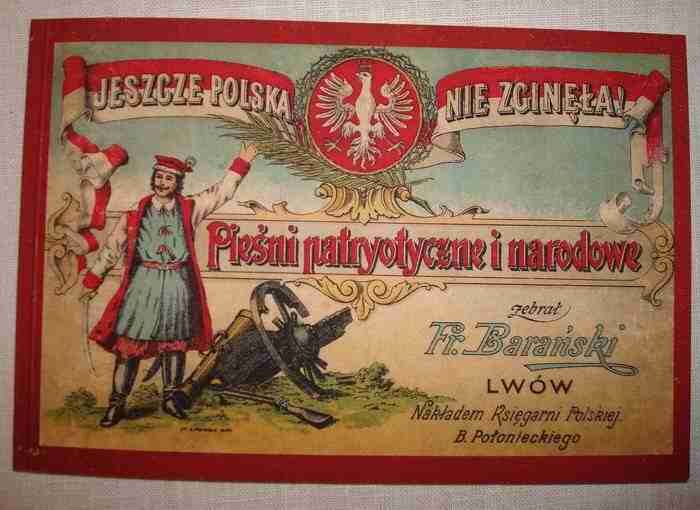 ”Jeszcze Polska nie zginęła” (“Poland has not yet perished”) — so begins the anthem of modern Poland — “Mazurek Dąbrowskiego” (“Dąbrowski's Mazurka”), written back in 1795. Only 67 years later (in 1862) Pavlo Chubynskyi wrote a poem which became the anthem of modern Ukraine. The anthem begins with the words: “Ще не вмерла України…” (“Ukraine's glory has not yet perished…”). “Do you feel the likeness? But also pay attention also to the time difference between the national maturity of Poles and Ukrainians-Rusyns. It is no coincidence that this maturation was clearly consistent with the concentration of the Polish population in the territory of Ukraine-Rus'. Where there was a greater concentration of Poles, there was faster national maturing. The Poles' example was very important. A special role was played by the Polish anti-Russian uprising of 1863. Ukrainians at that time were on the way from ethnic patriotism to true Ukrainian nationalism.
”Jeszcze Polska nie zginęła” (“Poland has not yet perished”) — so begins the anthem of modern Poland — “Mazurek Dąbrowskiego” (“Dąbrowski's Mazurka”), written back in 1795. Only 67 years later (in 1862) Pavlo Chubynskyi wrote a poem which became the anthem of modern Ukraine. The anthem begins with the words: “Ще не вмерла України…” (“Ukraine's glory has not yet perished…”). “Do you feel the likeness? But also pay attention also to the time difference between the national maturity of Poles and Ukrainians-Rusyns. It is no coincidence that this maturation was clearly consistent with the concentration of the Polish population in the territory of Ukraine-Rus'. Where there was a greater concentration of Poles, there was faster national maturing. The Poles' example was very important. A special role was played by the Polish anti-Russian uprising of 1863. Ukrainians at that time were on the way from ethnic patriotism to true Ukrainian nationalism.
Did the Poles want awakening of Ukrainian nationalism? Forward-looking Poles welcomed it, knowing that they alone could not cope with Moscovia. For the longest time in the world — longer then we did — they had been calling us Rusyns and Moskals — Moskals. We should not forget that in 1920 the Poles for the sake of us recaptured Kyiv from Bolsheviks. Only the organizational weakness of the Ukrainian liberation movement did not allow us to consolidate that success. We should also remember the fact that Poland was the first on the European continent to have recognized Ukraine's independence.
It is known that the Poles and Muscovites were colonizers of Rusyns-Ukrainians. But is it possible to compare them, say, in the period between the world wars?
In cultural terms, of course, there was the Poles' discrimination towards Ukrainians in Western Ukraine. The Poles tried hard to turn Ukrainians into the Polish, but they never sought to destroy them. At this, in Lviv many Ukrainian newspapers were published. After the Second World War, only one Ukrainian newspaper was published there — the newspaper of the Lviv Regional Committee of the Communist Party of Soviet Ukraine.
In Eastern Ukraine Muscovites went along a more radical way. There is no person — there is no problem. This was their leader's fundamental slogan. Here, they did not try to turn Ukrainians into Muscovites. They just started their systematic extermination on any occasion. The Russification itself was just a logical consequence of the genocide of Ukrainians in the latter's attempt to survive, somehow disguising themselves as non-Ukrainians.
However, in Volyn Polish villages were burning, as well as Ukrainian ones. At this, over the history of Ukraine-Rus' not a single Muscovite village had been burnt. Isn't this strange? High-profile terrorist attacks of our nationalists had also been directed against the Polish high-ranking officials. True, some minor official of the Russian consulate was allegedly killed in Lviv. But it could be an ordinary Russian secret services 's fake and, in fact, no one was killed or an anonymous man died who after death was given specific name and position. How much do we need a thorough and objective history of Ukraine-Rus!
Perhaps the genocide against Ukrainians-Rusyns was God's punishment for the feebleness of their national identity in times of national liberation movement of 1917-1921? Often today we see that Ukrainians are easy to give up their national identity in favor of almost inconditioned reflex of adaptation to the environment. Most often benefits from this are completely illusory, while losses are heavy.
 Educating young people, we should remember that the Ukrainian literature of the 19th century was built on an unfavorable soil. The desire to make heroic our history of Cossack times was limited by narrow bounds. Among all the surrounding peoples on the pages of books it was safe to win only non-state Polish and Crimean Tatars. Those were they whom the Cossacks used to defeat in the interpretation of Mykola Hohol — a brilliant Ukrainian writer of world level. But the writer in general ignores the fact that the elite of the Cossacks entered in the register and received an annual salary from the Polish crown. He also ignores the fact that the Sich what destroyed not by the Poles but by the Empress of Moscovia. His famous “Taras Bulba” was not written not for the writer to become a martyr for Ukraine, but to please the reader and the Russian emperor's family, to gain fame and to become part of the Muscovite elite. It was the emperor who financially supported Mykola Hohol during his long stay abroad. Mykola Hohol in his youth refused to save Ukraine-Rus', but did he find his own happiness instead? His early and tragic death shows that he did not.
Educating young people, we should remember that the Ukrainian literature of the 19th century was built on an unfavorable soil. The desire to make heroic our history of Cossack times was limited by narrow bounds. Among all the surrounding peoples on the pages of books it was safe to win only non-state Polish and Crimean Tatars. Those were they whom the Cossacks used to defeat in the interpretation of Mykola Hohol — a brilliant Ukrainian writer of world level. But the writer in general ignores the fact that the elite of the Cossacks entered in the register and received an annual salary from the Polish crown. He also ignores the fact that the Sich what destroyed not by the Poles but by the Empress of Moscovia. His famous “Taras Bulba” was not written not for the writer to become a martyr for Ukraine, but to please the reader and the Russian emperor's family, to gain fame and to become part of the Muscovite elite. It was the emperor who financially supported Mykola Hohol during his long stay abroad. Mykola Hohol in his youth refused to save Ukraine-Rus', but did he find his own happiness instead? His early and tragic death shows that he did not.
When I remember the emergence in childhood of my own prejudice against the Poles, I clearly link it to the reading of this work by our genius. This is despite the fact that I have some Polish blood in my veins. I would now think twice what to teach our children, and for what purpose.
I am sure that now the situation is both culturally and in terms of patriotism is changing dramatically. The majority of high school graduates for the first time in the history of Ukraine have the opportunity to study at universities. It is no longer parts of a per cent, as it was before World War I, and not the 15-20 %, as in Soviet times, but all 85 %. High quality higher education along with patriotic education (!!!) — is the key to our confidence in the bright future of our country and its people. We are gifted by nature. Let us multiply this gift by education and hard work in the name of Ukraine-Rus'.
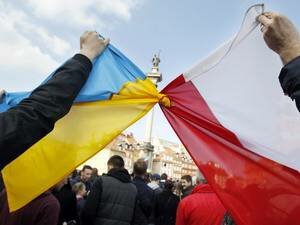 And yet, in the future I see two states and one people. One people not only genetically, but also mentally. Only then we will be each other's reliable support.
And yet, in the future I see two states and one people. One people not only genetically, but also mentally. Only then we will be each other's reliable support.
When exactly will this happen? It depends not only on Ukrainians, but also on Poles. An intensive civilization and cultural movement towards each other should start immediately. Because the alternative is also always available. For example, we could together return into the modern Golden Horde, now led by V. Putin's regime.
At the same time, the history of our relations with Moscovia during the last millennium shows that this is simply impossible. Today, our strategic goal is not reconciliation with today's Moscovia. Our common super-task should be the destruction of Putin's Moscovia as the Muskovites' neo-Empire aimed not only against the Ukrainians-Rusyns and Poles, but against the whole civilized European Community.


